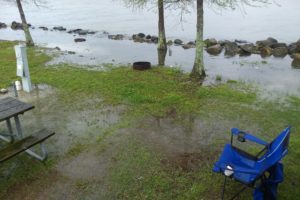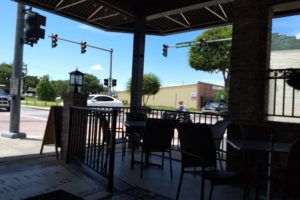Bishop has a wonderful museum just north of town that gives a glimpse of life in the late 1800s and early 1900s. The train depot, the original Slim Princess engine No. 9 with its boxcars and caboose, the turntable, the water tank, and the agent’s house are original to the grounds from 1883. The rest of the buildings are homes, offices, and mining operations from other parts of the county that have been brought here for us to enjoy. Let’s start with the train depot and train cars.

Why the name Laws for the depot and town? They were named for R.J. Laws who was retained as Superintendent when Southern Pacific bought Carson & Colorado in 1900 and must have worked there for a long time.


together stored on side of train depot; they were
probably used underground for water

remind you of the dance scene in Oklahoma?





that the agent could move around with as needed?


engine #9

for the last time in 1960.
If you’d like more information about this railroad line and how it impacted Laws, as well as information on narrow gauge railroads and why they were popular, especially in mountainous areas, go to the end of this post since it’ll have more words than some of you will want to read.



what was in the car; it could carry a lot of weight!




after the railroad stopped using wood for steam)


turntable

drive onto the turntable to be turned by hand so it’s facing the
other way to go back to the mines. Another turntable was here
originally but replaced by this one in 1911

strong arms of 4 men to turn the 40-ton locomotive




pole the men used to turn the turntable around
another trail to ride

used to transport workers to the mines; this car (trolley) has been refurbished and gives rides up and down the track
town buildings
The museum has done a wonderful job of showing us what buildings of this era looked like, as well as maintaining them.

Steve McQueen; it’s a pretty violent western but has beautiful scenery.








corner basin 
photo too
various buildings housed these items that were interesting to us


hearse 
basket is for carrying bodies out of a home

wood mule saddle on right side 
warm gloves, probably buffalo

post office mail boxes 
used these combination locks

the home of the last postmistress is later on in this post.

adult bathtub 
child’s bathtub



mining buildings



semi-private tubs in the ground 
heater for hot bath water


living room and 
kitchen in 1 room




newer buildings

as a home before being brought to the museum for us to see



the street and the home of the last postmistress in Laws

some of the bottles 
in the bottle house

lived on a ranch in north Bishop; the rooms had period furnishings





winter, this is the closest we could get to this ancient pine tree
gold mining







the country’s largest tungsten producer and remained active from 1938
to 1990. Tungsten has the highest melting point of all metals. It’s used
in high speed cutting tools, tire studs, electrical contacts, razor
blades, and lamp filaments.

officials chose to come into Owens Valley rather than go through Nevada.
In the early 1880s, the railroad handled tons of supplies coming into the area and mineral products leaving for Nevada and beyond.
The process of taking the large rocks and pounding them into fine sand is shown in the following pictures.

much smaller and are carried to the next step on the little buckets
on the left



next step to break down the stones even more







work with to get the the metal they want

old way of doing the same thing

operated with nearly any available source of power



So much to see and learn at this museum; what a wonderful day we’ve had—but our minds are like mush. This is the view we saw when we left. Puts all into perspective.

Carson and Colorado Railroad Company and its impact
The company was formed in 1880 with the goal of building a narrow gauge railroad from around Carson City, Nevada (precisely Mound House and Carson River area), south and then east to the Colorado River north of Las Vegas. Looks like it never turned east but stopped at Keeler, California, just east of Lone Pine, where mines like the Cerro Gordo were located. Trains in the Lone Pine area could get to Los Angeles.
As people learned that the railroad would run east of the Owens River, people started to move in around the train depot and make a town. Construction included many homes, barns, corrals, two general stores, a rooming house, eating house, hotel, boarding house, pool hall, dance hall, blacksmith shop, post office, barber shop, powder magazine, and warehouses. Ranchers in the area used the railroad to ship their crops.
Eventually the narrow gauge tracks were changed to standard tracks on most of the route. Passenger service through Laws was abandoned in 1932.
In January 1959, permission was given to discontinue the narrow gauge tracks from Keeler to Laws because it was so expensive to transfer products from narrow gauge railroad cars to the standard gauge cars. The depot was closed in February 1959. The final day of operation between Laws and Keeler was on April 30, 1960.
This final track from Keeler to Laws was the last narrow gauge common carrier west of the Rockies.
As the local mines closed, trucking became cheaper than rail freight, and the City of Los Angeles buying most of the valley for the water rights, the railroad wasn’t needed as much and people started moving away. By 1959 when the railroad stopped operating, most of the buildings had been torn down for salvage.
Laws Museum opened on April 1, 1966, 83 years from the day the first scheduled train arrived at Laws from the north with U.S. mail, Wells Fargo Express and baggage cars, as well as passenger and freight service.
information gleaned from the “Story of Laws” by Clarabelle Hawkins in the museum’s brochure, as well as other information in the brochure
why narrow gauge railroads
As we were walking through the train area and saw the different size rails, we started wondering why narrow gauge railroads had been built since the standard size or rails were used in most places. We found some great information in Wikipedia.
Narrow gauge railways usually have tighter curves [mountains], smaller minimum clearances in tight spaces (structure gauges) like mines, and lighter rails. Less expensive to build, equip, and operate. They have smaller cars and locomotives for areas with height and width restrictions. Usually built to serve industries and communities where the traffic potential would not justify the cost of a larger gauge line. These areas probably wouldn’t have a railroad if the narrow gauge wasn’t available.
Most of these railways have vanished because of the rise of modern trucking.








